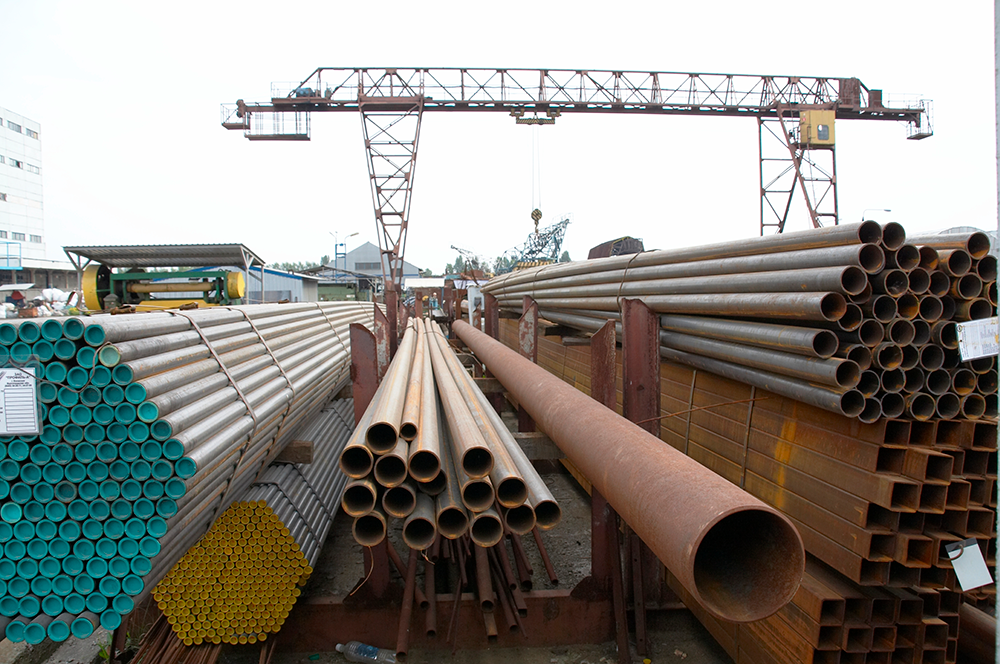NEWS

Steel pipes are classified based on various factors including their manufacturing method, material composition, and application. Here are some common classifications of steel pipes along with their applications:
Based on Manufacturing Method:
Seamless Steel Pipes: These pipes are manufactured without any welding seam, typically by extruding a solid billet through a die to form a hollow tube. Seamless pipes are preferred for applications requiring high pressure, high temperature, or strict dimensional tolerances, such as in oil and gas exploration, refineries, and high-pressure fluid transmission.
Welded Steel Pipes: Welded pipes are made by welding steel plates or coils together to form a cylindrical shape. They can be further classified based on the welding method:
ERW (Electric Resistance Welded) Pipes: These pipes are welded longitudinally, typically using high-frequency induction welding. ERW pipes are widely used in various applications including water and gas transmission, structural support, and scaffolding.
LSAW (Longitudinal Submerged Arc Welded) Pipes: LSAW pipes are welded longitudinally and then submerged in a flux to complete the welding process. They are used for conveying large volumes of fluid, such as in oil and gas pipelines and offshore structures.
SSAW (Spiral Submerged Arc Welded) Pipes: SSAW pipes are formed by spirally winding steel coils and welding the seams along the spiral. They are suitable for conveying fluids over long distances, such as in water and gas transmission pipelines and piling applications.
Based on Material Composition:
Carbon Steel Pipes: These pipes are primarily made of carbon steel, with varying amounts of other elements such as manganese, phosphorus, sulfur, and silicon. Carbon steel pipes are widely used in industries such as construction, infrastructure, automotive, and manufacturing due to their affordability and versatility.
Stainless Steel Pipes: Stainless steel pipes contain chromium and other alloying elements, which provide excellent corrosion resistance, high temperature resistance, and strength. They are used in applications requiring resistance to corrosion and oxidation, such as in chemical processing, food and beverage industry, and pharmaceuticals.
Alloy Steel Pipes: Alloy steel pipes contain additional alloying elements such as chromium, molybdenum, nickel, or vanadium, which enhance their mechanical properties such as strength, hardness, and toughness. They are used in applications requiring high temperature, high pressure, or resistance to corrosion and abrasion, such as in power generation, petrochemical, and aerospace industries.
Based on Application:
Oil and Gas Pipelines: Steel pipes are extensively used for transporting oil, natural gas, and other petroleum products from production sites to refineries and distribution centers. Seamless and welded pipes are both employed in this application depending on the specific requirements.
Water Supply and Drainage Systems: Steel pipes are used for conveying potable water, wastewater, and stormwater in municipal, industrial, and agricultural settings. They offer durability, strength, and resistance to corrosion, making them suitable for underground and above-ground installations.
Structural Support: Steel pipes are used in construction and infrastructure projects for structural support, such as in building frames, bridges, tunnels, and highway guardrails.
Mechanical and Engineering Applications: Steel pipes find applications in various mechanical and engineering applications, including machinery components, automotive exhaust systems, HVAC systems, and hydraulic systems.
Utilities and Industrial Applications: Steel pipes are used in utilities such as heating and cooling systems, steam distribution networks, and compressed air systems, as well as in industrial processes for conveying fluids, gases, and slurries.
These are just a few examples of how steel pipes are classified and their diverse applications across different industries. The choice of steel pipe depends on factors such as the operating conditions, required mechanical properties, corrosion resistance, and cost considerations for a particular application.
Related Posts
Online Message
Please give us a message
We have a broad and diverse database at our disposal on existing and potential customers and suppliers, providing the international standard processing and distribution service for customers all over the world. Our goal is to become the comprehensive service center combined with processing, assorting and storage.
